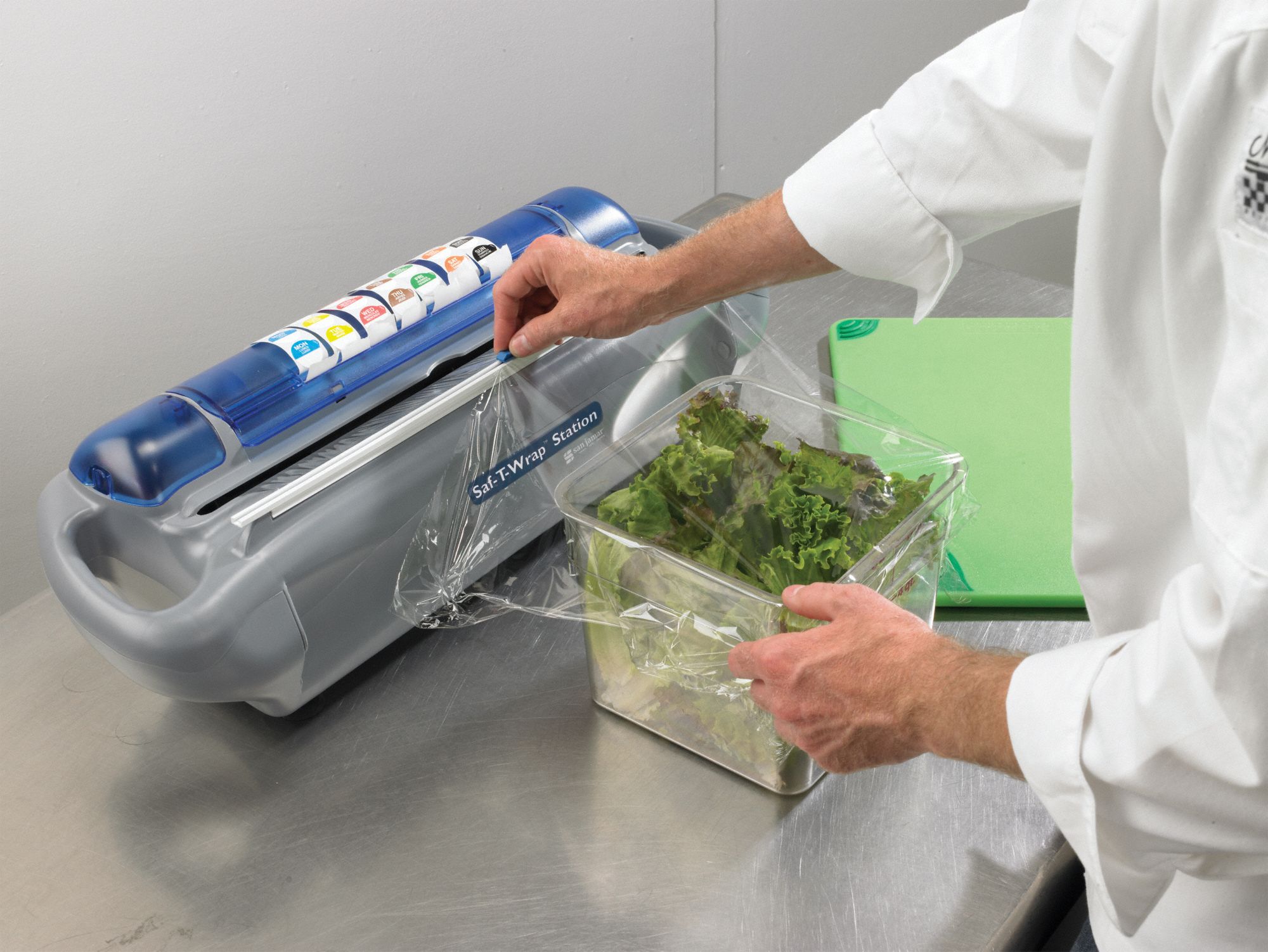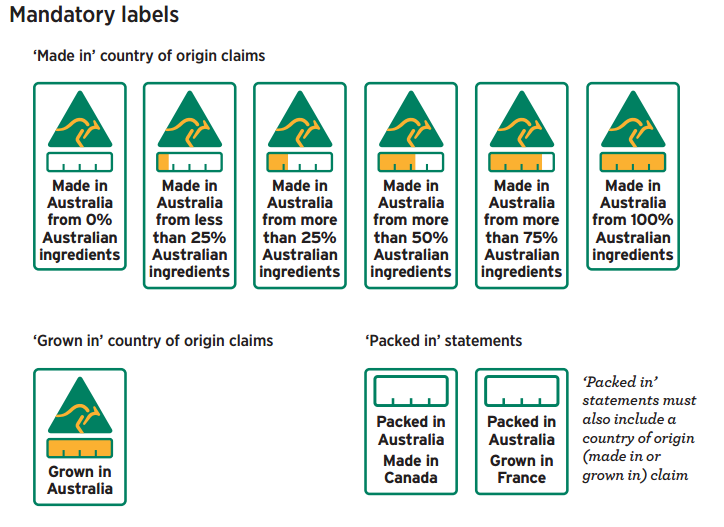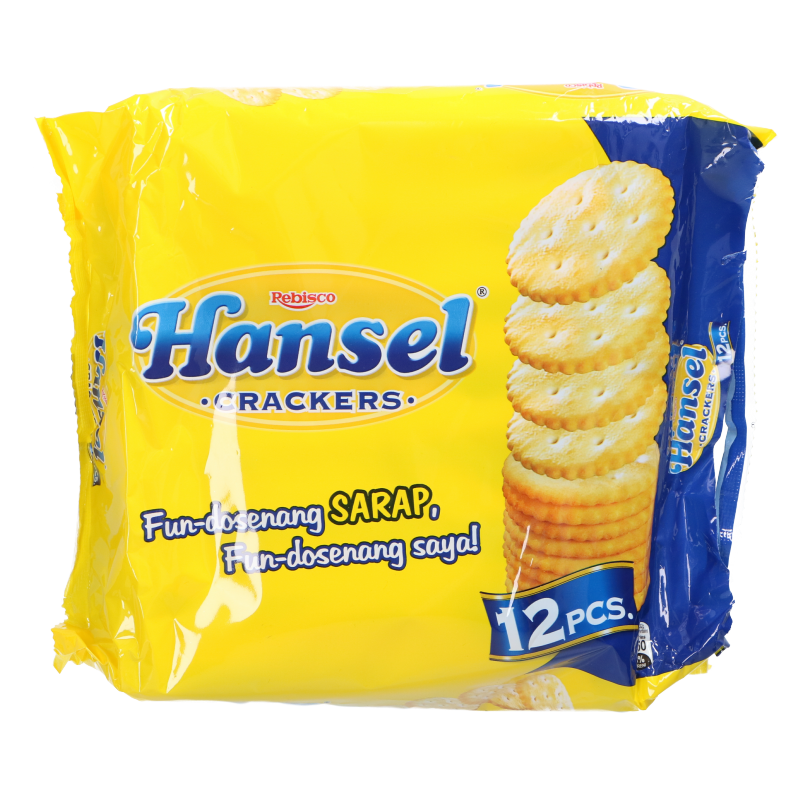43 food labels country of origin
Food Standards Agency - Food labelling e-learning course The 'country of origin' is the country from which the product was wholly obtained or, if production involved more than one country, the country where the product last underwent substantial, economically justified processing. The 'place of provenance' is any place where a food is indicated to come from that is not the 'country of origin'. Marking of Country of Origin on U.S. Imports | U.S ... Acceptable Terminology and Methods for MarkingEvery article of foreign origin entering the United States must be legibly marked with the English name of the country of origin unless an exception from marking is provided for in the law. SPECIAL NOTE: This webpage is strictly about marking of country of origin on U.S. imports and is for general information purposes only.
Country of origin labelling - Food Standards The Australian Government introduced a country of origin food labelling system under Australian Consumer Law on 1 July 2016. Country of origin labelling requirements for food is in the Country of Origin Food Labelling Information Standard 2016, under the Competition and Consumer Act 2010. These requirements became mandatory on 1 July 2018.

Food labels country of origin
Country of Origin Labels are required On Certain Foods Your one-stop label solutions for custom or in stock supermarket labels and food prep labels. Top Rated Supermarket labels and Food and Beverage Labels, Meat and Seafood Labels, Bakery Labels, Deli Labels, Produce Labels, Country of Origin Labels, Promotional Labels, Gold Foil Labels, Short Oval Labels and more. Country of origin | NSW Food Authority Some unpackaged food, including fresh and processed fish, pork, beef, sheep and chicken mince, fruit and vegetables, must also display a country of origin label. These labels can only be used if the key ingredients in the food originated in Australia and the food is manufactured in Australia: Product of Australia Produced in Australia Country of origin food labelling resources | business.gov.au May 21, 2021 · Imported priority foods must, as a minimum, carry a country of origin statement in a clearly defined box (the box is not required if the food is being sold unpackaged). Example of a country of origin statement in a clearly defined box below: The outline box is not required on imported non-priority food products.
Food labels country of origin. Did the U.S. Remove 'Country of Origin' Labeling from Meat ... The repeal would not affect existing requirements for country-of-origin labeling for lamb, venison, goat meat, perishable agricultural commodities, peanuts, farm-raised and wild fish, ginseng ... Origin labelling - Food Safety Furthermore, at EU level mandatory origin provisions have been developed on the basis of vertical approaches for instance for honey, fruit and vegetables, fish, beef and beef products and olive oil. Origin labelling for fresh, chilled and frozen meat of swine, sheep, goats and poultry: PDF Country of Origin Labeling: Just the Facts - Food Processing its customers about the sale but neglected to provide the country of origin. As a corrective action, this retailer should declare the information on a card on the display case or label each product with a label on the package. C. a. s. e #2 Mislabeled Product - Retailer incorrectly identifies the country of origin of a covered commodity. Country of Origin Labeling of Agricultural Products ... Country of Origin Labeling for Meat Products Meat from animals imported for immediate slaughter in the United States must be designated as "Product of Country X and the United States." Imported muscle cuts of meat for which no production steps occur in the United States retain the origin as declared to U.S. Customs and Border Protection.
Country of Origin Labeling (COOL) Frequently Asked Questions What is COOL? Country of Origin Labeling (COOL) is a consumer labeling law that requires retailers (most grocery stores and supermarkets) to identify the country of origin on certain foods referred to as “covered commodities”. The 2002 and 2008 Farm Bills and the 2016 Consolidated Appropriations Act amended the Agricultural Marketing Act of 1946 to require retailers to notify their ... Guidelines for "Product of Canada" and "Made in Canada" claims This would be the same case for a food with a claim which refers to the origin of a particular ingredient, whether single or multi-component, as being "100% Canadian". For example, if the claim "Made with 100% Canadian wheat" is used on a bag of dry pasta, all of the wheat, and its derivatives, used in that product must be Canadian. Country of Origin Labeling (COOL) | Agricultural Marketing ... Country of Origin Labeling (COOL) is a labeling law that requires retailers, such as full-line grocery stores, supermarkets and club warehouse stores, to notify their customers with information regarding the source of certain foods. Country-of-Origin Labeling for Foods would expand food country-of-origin labeling (COOL) requirements throughout the European Union (EU). Mandatory COOL is already required for beef, honey, olive oil, and fresh fruits and vegetables. The rules now would also apply to all meat, poultry, dairy products, and other single- ingredient foods.
How To Read Food and Beverage Labels | National Institute on ... Feb 24, 2022 · Sometimes, food and beverage packaging includes terms that may try to convince the consumer the food is healthy. To help avoid confusion, the FDA sets specific rules for what food manufacturers can call “light,” “low,” “reduced,” “free,” and other terms. This type of labeling may have little to do with how nutritious the food is. CPG Sec. 560.200 Country of Origin Labeling CPG Sec. 560.200 Country of Origin Labeling BACKGROUND: A statement of the country of origin on the labeling of imported foods is not required by the Federal Food, Drug, & Cosmetic Act. This is a... Country of Origin Food Labelling Information Standard 2016 Sep 28, 2017 · This is a compilation of the Country of Origin Food Labelling Information Standard 2016 that shows the text of the law as amended and in force on 12 August 2017 (the compilation date). The notes at the end of this compilation (the endnotes) include information about amending laws and the amendment history of provisions of the compiled law. Country of Origin Food Labeling | Jenn David Design The Country of Origin Labeling requirement states that "Food labeling statements regarding geographical origin must not be false or misleading in any particular." So it would be incorrect to state that the cocoa is a product of both Mexico and Chile on the label. You would need two labels in this case—one for each respective country of origin.
PDF Topic: Country-of-origin-Labeling on FDA Foods and Additives II will expound on the relevant food labeling laws, and the great obstacles this proposed labeling requirement would face. Part III will address some unanswered counterarguments. Part IV will detail how Japan has required a law to label foods with country-of-origin. The Essay will propose the FDA should adopt a law similar to Japan's.
Country of origin on food labels - Canadian Food ... Country of origin on food labels. In Canada, there are mandatory requirements for certain food products to indicate the foreign state (definition) of origin on their labels. Although foreign states include countries as well as World Trade Organization (WTO) members, the Industry Labelling Tool commonly refers to this requirement as country of origin labelling.

SAN JAMAR Food Wrap Dispenser w/Slide Cutter, Holds (9) Rolls Date Labels, (1) 12 in to 18 in ...
Country of origin labelling online tool | business.gov.au When you're ready to create your country of origin label, make sure you know: if your product contains Australian ingredients the percentage (or average percentage) of Australian ingredients in your product the name of the country where your product was made ('last substantially transformed ') or virtually all of its processing was undertaken
Country of origin food labels | Department of Industry ... Country of origin labelling requirements for food are in the Country of Origin Food Labelling Information Standard 2016. You can design and apply your own labels as long as they meet the standard. On the business.gov.au website we provide the following resources: an online decision tool that helps you to choose the right label to download
Commerce Commission - Country of origin of food Country of origin of food From 12 February 2022, businesses must disclose where certain fresh and thawed food comes from that they supply, offer, or advertise for supply to consumers in New Zealand. Baby walkers Children's nightwear Children's toys Cigarette lighters Household cots Pedal bicycles Care labelling Country of origin clothing labelling
Must processed food products have a country of origin label? Retail items that meet the definition of a processed food item do not require labeling under the COOL final rule. For more information, visit Common Questions & Answers on Country of Origin Labeling. Related Information.
Is Country-of-Origin Labeling a Food Safety Issue? | Food ... Country-of-origin labeling (COOL) is not a food safety issue. Except when it is. The law requires that much of our food be labeled with its source country, but the requirement that meat be labeled ...
New changes to Country of Origin Food Labelling, taking place throughout Australia | SBS Your ...
Country of origin food labelling | business.gov.au Country of origin food labelling Last Updated: 21 May 2021 Most food products for retail sale in Australia require a country of origin label. This page helps you identify the regulation you need to comply with and the label that applies to your food product. Country of origin food labelling can let consumers know which country a product came from.



Post a Comment for "43 food labels country of origin"